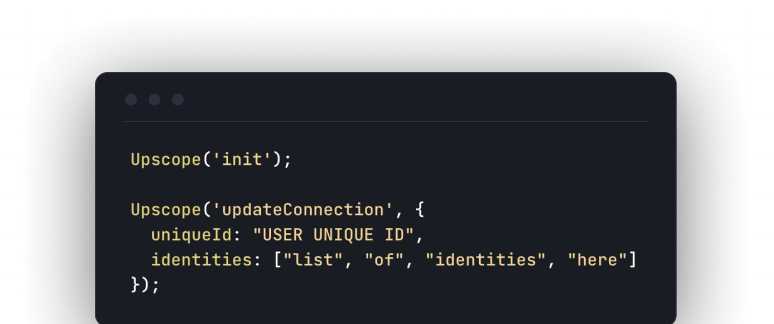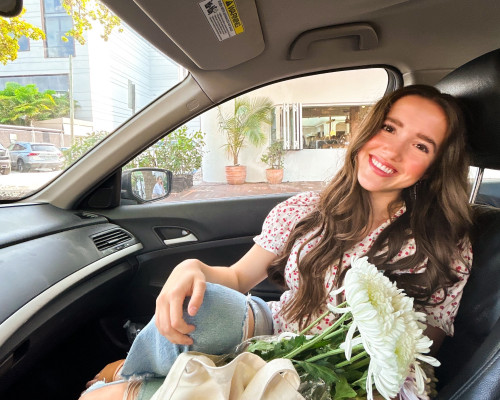Looking to make a viral video or a video that converts? Karen X Cheng shares
her top 10 tips for making multi-million viewed videos.

Key Takeaways:
-
Before you do anything, write the news headline first
-
Understand which emotions make people share
-
Make other people look good
-
Fake it till you make it
-
Don’t try to be overly clever. Facebook doesn’t give you that time. You have
to be really straightforward and deliver the message immediately. You don’t
have time to be clever. -
Turn your sound off when editing a video
-
Make sure that the first frame of your video is visually eye-catching
-
Make videos that convert
-
Design your videos to look like organic content, so it doesn’t look like a
paid ad on Facebook.
Transcription
The first viral video that I made was an accident. I was working for Microsoft
and I decided to quit. I thought it would be a good idea to quit, not with a
resignation email or letter, but with had resignation song.
I filmed the video of myself singing a song, and playing the guitar, all about
all the features that we built, and I uploaded it to YouTube, and sent it to
my team. I didn’t expect this video to go viral, but the title, ‘Microsoft
employee quits with song,’ makes for a really good news headline….
Tech Crunch wrote an article, and then other tech blogs picked up on it… After
one day, it was national news… And after two days it was international news.
What I hadn’t anticipated, was even though my video itself was was not
particularly entertaining, the headline ‘Microsoft employee quits with song’
is a really good news headline, and that’s why the video went viral.
I quickly learned that reporters don’t always check their facts or really even
read their articles very carefully. I got to see firsthand how news travels on
the internet, and how it gets distorted. So then, I started using that to my
advantage and started making viral videos on purpose.
I’ve made a bunch more viral videos… So, I’m gonna share with you exactly how
I do it with 10 tips to make your video go viral.
1. Before you do anything, write the news headline first. and this is
something that I learned from the first viral video that I made totally by
accident. Whenever you want a reporter to cover a story, the classic mistake
is pitching a reporter. They don’t necessarily have a great news headline to
pull out of it, and that’s what they need. Whenever you’re coming up with a
concept to spread on the internet, whether it’s a video or a photo series or a
blog, think about what makes for a compelling news headline at the start of
the project.
2. Understand which emotions make people share. so if you think about
things that you like or comment on versus the things that you share. The
difference between the things that you share, is they make you feel some
emotion pretty intensely. There are certain emotions that get people to share,
and some that don’t. The emotions that get people to share are awe, anger and
amusement…The emotions that don’t get people to share as much, is sadness or a
contentment.
How do you start a trend?
3. Make other people look good. If you think about why you share
something, it’s because it makes you look clever, smart or funny. If you think
about how you get someone to share your brand’s content, they’re not gonna
share it because your brand is the best thing ever, they’re gonna share it
because it reflects on something about them. So, whenever you make a piece of
content, think about how you can make your viewer/ your consumer look good,
not just make yourself look good.
4. Fake it till you make it. About a day or two after my video came out,
Cosmo wrote an article about one of my videos. It was titled, ‘Behold the
donut selfie, the insane new selfie trend that’s going viral’. Despite this
Cosmo article title, only 12 people had ever done the donut selfie…
When I email reporters, I could have said ‘hey here’s this new video, do you
want to write about it?’, but this doesn’t really get reporters to write about
your video. Instead, I said ‘hey there’s this new type of selfie that people
aren’t doing’, and then I linked them my video…. and then I linked them three
videos of my friends also doing the donut selfie. It is the reporters job to
sensationalize. By saying that people are doing something, the reporter says
it’s a new viral trend, so people read the video and the article, believing
it, and then they actually start doing it because they think it’s a viral
trend, but they are making it a viral trend.
The following tips are for Facebook
5. Don’t try to be overly clever. Clever does really well on YouTube
because if you can come up with a clever concept, you come up with a clever
news headline. Reporters write about it, they embed your YouTube video in
their article, and people click on the article and they watch it. But that’s
not how Facebook works… The way Facebook works, is that you’re scrolling
through you’re seeing your friends posts, you’re scrolling past a video, maybe
you stop and watch it maybe you don’t. You keep scrolling… The problem with
trying to be clever is it takes time.** You have to set it up, and then you
have to give them a punchline and that takes time. Facebook doesn’t give you
that time. You have to be really straightforward and deliver the message
immediately**. Here’s a product, here’s what it does, here are some
interesting visuals that show you the product. That kind of video performs a
whole lot better on Facebook, **which is great for people who have
interesting products, **because then you can just share exactly what your
product does.
6. Turn your sound off. 80% of people watch Facebook videos with sound
off. If you have an amazing narration or epic music, people aren’t gonna
experience any of that, so when I edit my videos I actually edit them with
the sound off.
**7. You have less than one second to stand out. **On Facebook you have
less than one second, because people aren’t going to stop and watch your
video. They’re gonna scroll by and so you have to catch them while they’re
scrolling, so you got to make sure that the first frame of your video is
visually eye-catching.
8. Watch it on a tiny screen. People don’t experience videos on a giant
screen on Facebook. They experience them really small, which is why the
captions in my videos are huge. They seem ridiculous, but once they’re on a
phone screen, they don’t seem so ridiculous.
9. Buy your views. So this is something that I’ve resisted for a really
long time, because buying views on YouTube is not a great experience. It’s
fairly expensive, and they are really annoying. The great part about Facebook
is that their ad experience is so much better. So, on Facebook if you open up
the Facebook app and you start playing a video, and it’ll bring you into the
special video player, where every fifth video is an advertisement. It’s really
subtle and you can scroll past it. So, what you can do, is design your
videos to look like organic content, so it doesn’t look like a paid ad. So,
what happens is, people like the video, comment on the video and they share
the video, as if it wasn’t an advertisement.
10. Make videos that convert. Write a video that moves products, that
drives sales, and oftentimes, the kinds of** videos that convert are pretty
different than the videos that go viral. **If you want to make videos that
convert, you can make them for pretty low production. Quality isn’t an
expensive video to make right. You can make 10 different videos, cut them 10
different ways and test out the videos. Once you’ve seen which ones convert,
buy ads against those videos.
End
Related: Storytelling to make content go
viral
Also see: the killer headline that got an MIT startup to 70,000+
users






